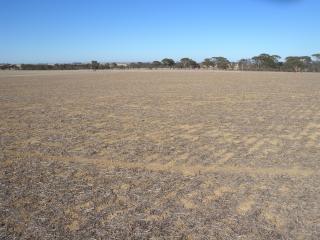Landholders have been advised to assess the level of ground cover on their paddocks so they can implement strategies to minimise wind erosion over coming months.
There have already been reports of wind erosion in some districts where there was a below average growing season, where less than decile 3 winter rainfall was recorded.
Department of Primary Industries and Regional Development manager Brendan Nicholas said the aim was to maintain ground cover until new plant growth appeared in four to five months’ time.
Mr Nicholas said it was important to keep the soil stable and anchored to prevent valuable topsoil from being blown away and limiting yields of future crops and pastures.
“Department trials have shown that at least 50 per cent prostrate ground cover or 30 per cent standing stubble is required, regardless of the soil type, to protect paddocks from wind and water erosion through to the start of the new season’s growth,” he said
“That is equivalent to about one tonne per hectare of cereal stubble or 600 kilograms per hectare of dry pasture at the beginning of summer. For lupin and canola stubble, about 2t/ha is recommended.”
Mr Nicholas said landholders should assess paddocks every couple of weeks, as ground cover would naturally decline over the summer-autumn period.
“While ground cover may look adequate at the moment, it will deteriorate naturally over the next few months, due to sunlight and moisture,” he said.
Mr Nicholas said it was important for landholders to minimise machinery movement and remove livestock immediately from paddocks with less than 50 per cent ground cover to minimise the erosion risk.
“There are several ways to keep stock off paddocks, including feeding them in confined paddocks or feedlotting, while there is also the option of agistment or selling animals before both paddocks and stock lose condition – depending on the cost-benefit of doing so,” he said.
Other management options include protecting bare areas around gates, fence lines and watering points to prevent the surface soil from becoming detached.
The management of summer weeds will also be a challenging consideration, as landholders attempt to balance the benefit from providing ground cover against the risks associated with delaying control treatments.
The department recently updated its 2018-19 Season webpage to provide useful information to assist landholders with stock and land management decisions.

Media contacts: Megan Broad, media liaison +61 (0)8 9368 3937
